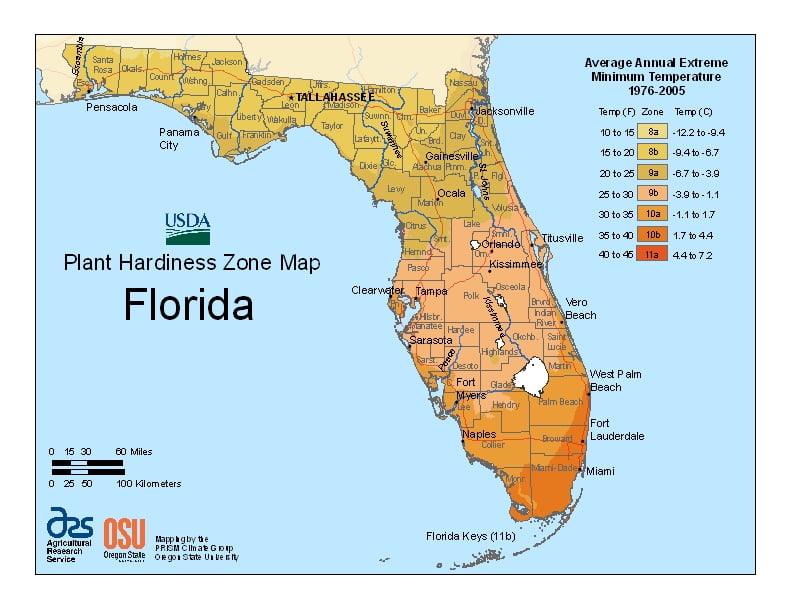
Florida is tempered somewhat by the fact that no part of the state is distant from the ocean with some parts have a true tropical climate, ranging from USDA Plant Hardiness Zones 8a through 11a.The state has variable weather per different areas so get to know which zone your city is located in so that you can address and avoid potential issues before they become problematic.
The USDA zones map is a useful system for determining what plants will survive and grow in certain areas ofFlorida.
Understanding how these hardiness zones work means you can choose the right planting time, and optimize growing for your climate.
Florida has an average daily temperature of 70.7 °F (21.5 °C), it is the warmest state in the U.S.
In the summer, high temperatures in the state rarely exceed 100 °F (37.8 °C).
South Florida rarely encounters below freezing temperatures.
Florida’s nickname is the “Sunshine State”, but severe weather is a common occurrence in the state.
Central Florida is known as the lightning capital of the United States, as it experiences more lightning strikes than anywhere else in the country.